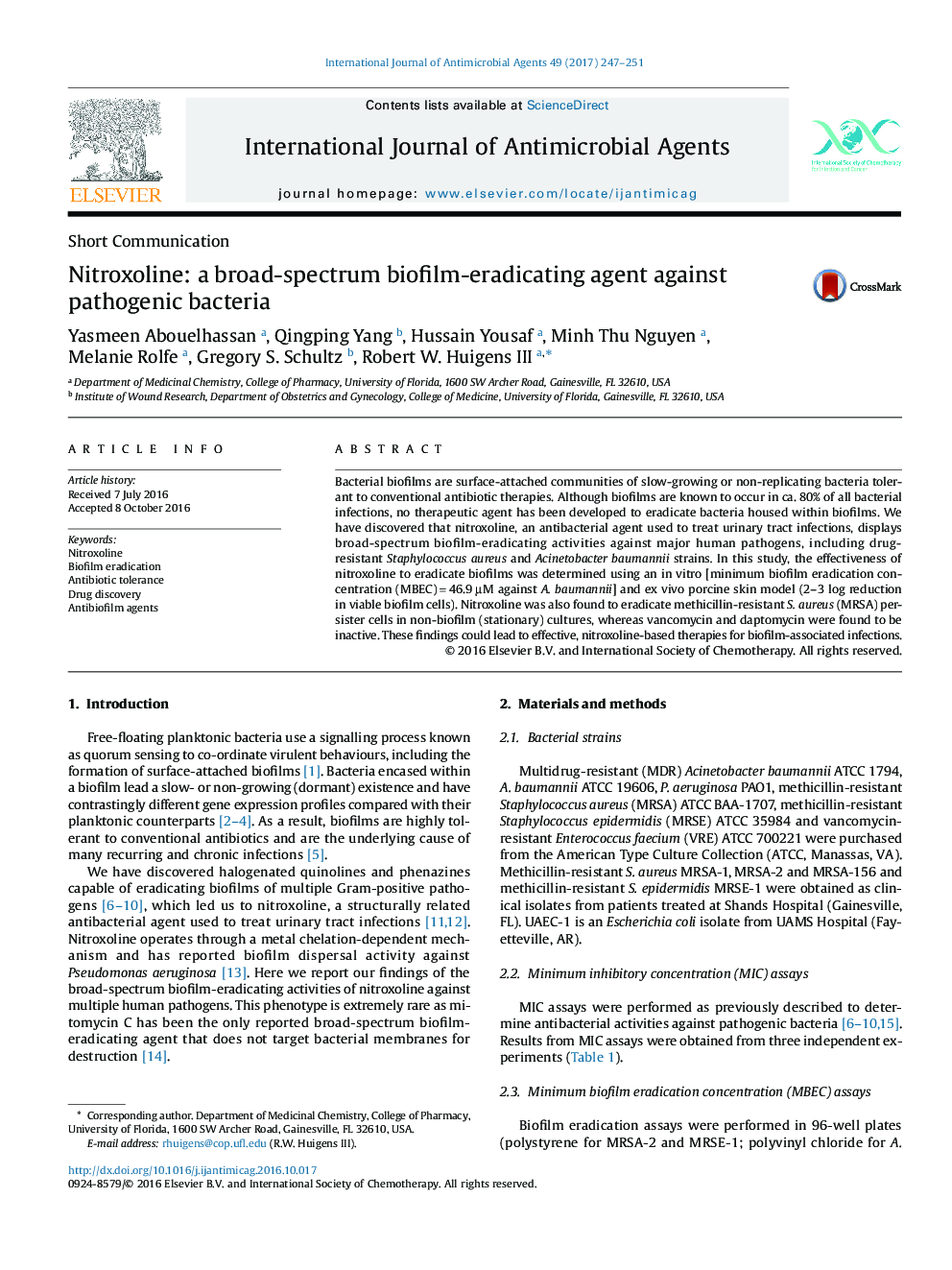| Article ID | Journal | Published Year | Pages | File Type |
|---|---|---|---|---|
| 5666980 | International Journal of Antimicrobial Agents | 2017 | 5 Pages |
â¢Nitroxoline demonstrates broad-spectrum biofilm-eradicating activities.â¢Nitroxoline eradicates biofilms in an ex vivo porcine skin infection model.â¢Nitroxoline slowly kills stationary methicillin-resistant Staphylococcus aureus (MRSA) cells.
Bacterial biofilms are surface-attached communities of slow-growing or non-replicating bacteria tolerant to conventional antibiotic therapies. Although biofilms are known to occur in ca. 80% of all bacterial infections, no therapeutic agent has been developed to eradicate bacteria housed within biofilms. We have discovered that nitroxoline, an antibacterial agent used to treat urinary tract infections, displays broad-spectrum biofilm-eradicating activities against major human pathogens, including drug-resistant Staphylococcus aureus and Acinetobacter baumannii strains. In this study, the effectiveness of nitroxoline to eradicate biofilms was determined using an in vitro [minimum biofilm eradication concentration (MBEC)â=â46.9âµM against A. baumannii] and ex vivo porcine skin model (2-3 log reduction in viable biofilm cells). Nitroxoline was also found to eradicate methicillin-resistant S. aureus (MRSA) persister cells in non-biofilm (stationary) cultures, whereas vancomycin and daptomycin were found to be inactive. These findings could lead to effective, nitroxoline-based therapies for biofilm-associated infections.
